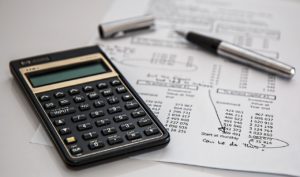Rising minimum payments. Harassing collection agencies. The looming threat of lawsuits. Struggling with unmanageable debt is a scary position to be in.
For people in these situations, bankruptcy is often the best long-term solution to get back on track, but bankruptcy is often unfamiliar territory. From different types of bankruptcies, to the many factors that could influence what you qualify for, determining what and if you can file for bankruptcy can be a daunting task.
To help, here are some things to consider before moving forward:
What are my options?
There are different types of bankruptcies a debtor can file, but the most common for a consumer would be either Chapter 7 or Chapter 13.
Chapter 7 is the most common type of bankruptcy filing. Designed for debtors in financial difficulty who do not have the ability to pay their existing debts, the purpose of filing a Chapter 7 is to ‘wipe out’ the debts you owe so you do not have to pay them.
However, not all debts are eligible to be discharged in bankruptcy, so keep in mind some of your creditors may survive to collect after filing. For these types of debts, a Chapter 13 bankruptcy may be a better solution if you qualify.
Chapter 13 bankruptcy is a repayment plan designed for people who have the ability to pay all or a portion of their debt. Chapter 13 may enable you to pay back a creditor who will not discharge or help you manage your debt with a court-ordered, income-based repayment plan. Chapter 13 may also help you keep any assets you have that are not protected in a Chapter 7 filing or help you get caught up on arrears to save a property from foreclosure or repossession.
Ok, so which would work best for me?
Many factors of your financial situation will dictate which Chapter of bankruptcy would be best for your specific situation. The best advice would be to speak to a qualified bankruptcy attorney to make the right decision.
Some factors that could alter what you qualify for:
- If you have filed bankruptcy before
- If your home, vehicles or other assets are in threat of foreclosure or repossession
- If you have assets (home, cars, businesses etc.) that cannot be protected
- If your income enables you to make a monthly payment towards what you owe
- The type of income you receive
- They type of debt you have
What if I file the wrong Chapter?
Without proper legal guidance, you may find yourself filing for the wrong type of bankruptcy.
Even if your income qualifies you for a Chapter 7, your assets may not be fully protected and the court may sell those items to pay your creditors. In that case, Chapter 7 may not be your best option. The last thing you want is to find out the court intends to sell your home! For Chapter 13 bankruptcies, you must have the income to support your bankruptcy payment and your debt must be under a certain dollar amount, so sometimes Chapter 13 isn’t the best option, even if you cannot proceed with a Chapter 7.
Cases where the individual files a bankruptcy they do not qualify for may result in the court dismissing or converting the case, revoking discharge or in extreme circumstances pursuing the petitioner for bankruptcy fraud, so the last thing you want to do is file incorrectly.
So, how do I make sure my bankruptcy goes smoothly?
The best recommendation would be to seek out a qualified attorney. Bankruptcy can be a confusing process and a qualified professional will be able to determine what the best course of action is for your specific situation.
If you are considering filing for bankruptcy, reach out to a local bankruptcy attorney in your area. Winterbotham Parham Teeple, a PC practices throughout Southern California, including Riverside County, Los Angeles County, San Bernardino County and Orange County. If you live in the area and need a free consultation to discuss what would work best for you, feel free to visit our website or call us directly at (800) 400-9000.




